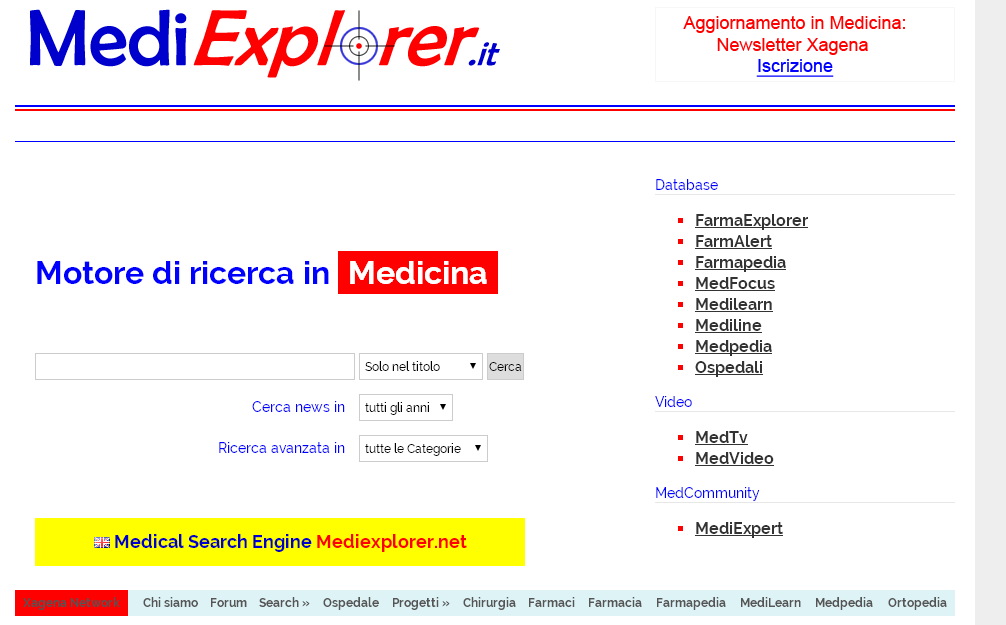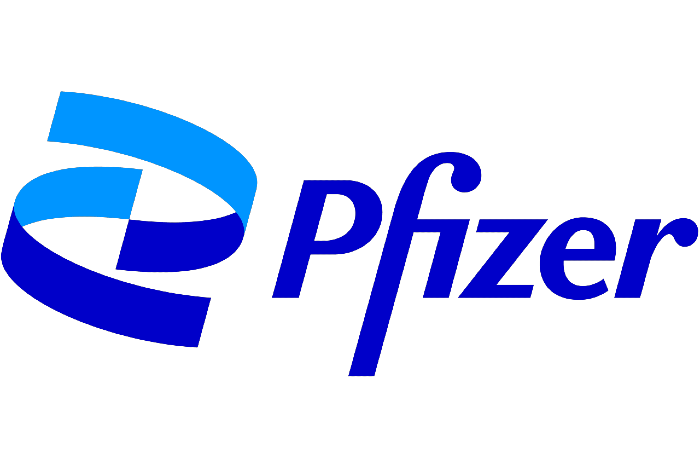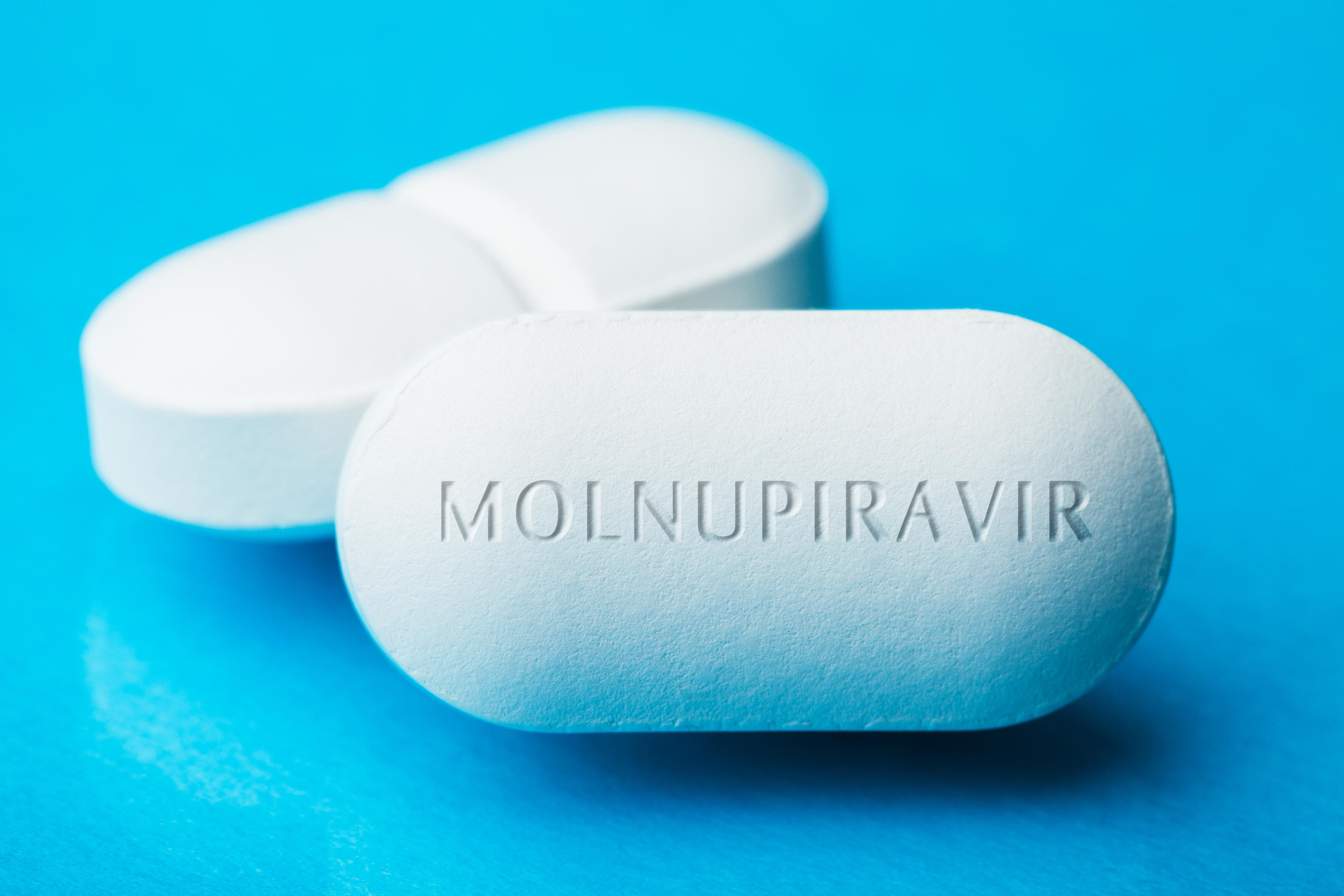Summary of Product Characteristics
This medicinal product is subject to additional monitoring. This will allow quick identification of new safety information. Healthcare professionals are asked to report any suspected adverse reactions. See section 4.8 for how to report adverse reactions.
1. Name of the medicinal product
Lagevrio 200 mg hard capsules
2. Qualitative and quantitative composition
Each hard capsule contains 200 mg of molnupiravir.
For the full list of excipients, see section 6.1.
Hard capsule.
Swedish Orange, opaque, size 0 (approximately 21.7 mm x 7.6 mm) hard capsule, printed with MSD corporate logo on the cap and “82” on the body in white ink.
4. Clinical particulars
4.1 Therapeutic indications
Lagevrio is indicated for treatment of mild to moderate coronavirus disease 2019 (COVID-19) in adults with a positive SARS-COV-2 diagnostic test and who have at least one risk factor for developing severe illness (see sections 4.2 and 5.1 for information on posology and limits of clinical trial population).
4.2 Posology and method of administration
Posology
Adults
The recommended dose of Lagevrio is 800 mg (four 200 mg capsules) taken orally every 12 hours for 5 days. The safety and efficacy of molnupiravir when administered for periods longer than 5 days have not been established (see section 5.1).
Lagevrio should be administered as soon as possible after a diagnosis of COVID-19 has been made and within 5 days of symptom onset (see section 5.1).
Missed dose
If the patient misses a dose of Lagevrio within 10 hours of the time it is usually taken, the patient should take as soon as possible and resume the normal dosing schedule. If a patient misses a dose by more than 10 hours, the patient should not take the missed dose and instead take the next dose at the regularly scheduled time. The patient should not double the dose to make up for a missed dose.
Special Populations
Elderly
No dose adjustment of Lagevrio is required based on age (see section 5.2).
Renal Impairment
No dose adjustment is required for patients with renal impairment (see section 5.2).
Hepatic Impairment
No dose adjustment is required for patients with hepatic impairment (see section 5.2).
Paediatric population
The safety and efficacy of Lagevrio in patients below 18 years of age have not been established. No data are available (see section 5.1).
Method of administration
For oral use. Lagevrio 200 mg capsules can be taken with or without food. The capsules should be swallowed whole with a sufficient amount of fluid (e.g., a glass of water). The capsules should not be opened, crushed or chewed.
4.3 Contraindications
Hypersensitivity to the active substance or to any of the excipients listed in section 6.1.
4.4 Special warnings and precautions for use
Sodium
This medicinal product contains less than 1 mmol sodium (23mg) per dose of 4 capsules, that is to say essentially ‘sodium-free’.
No drug interactions have been identified based on the limited available data. No clinical interaction studies have been performed withmolnupiravir. Molnupiravir is hydrolysed to n-hydroxycytidine (NHC) prior to reaching systemic circulation. Uptake of NHC and metabolism to NHC-TP are mediated by the same pathways involved in endogenous pyrimidine metabolism. NHC is not a substrate of major drug metabolising enzymes or transporters. Based on in vitro studies, neither molnupiravir nor NHC are inhibitors or inducers of major drug metabolising enzymes or inhibitors of major drug transporters. Therefore, the potential for molnupiravir or NHC to interact with concomitant medications is considered unlikely.
4.6 Fertility, pregnancy and lactation
Pregnancy
There are no data from the use of Lagevrio in pregnant women. Studies in animals have shown reproductive toxicity (see section 5.3).
Lagevrio is not recommended during pregnancy. Women of childbearing potential should use effective contraception for the duration of treatment and for 4 days after the last dose of Lagevrio (molnupiravir).
Breastfeeding
It is unknown whether molnupiravir or any of the components of molnupiravir are present in human milk, affect human milk production, or have effect on the breastfed infant. Animal lactation studies with molnupiravir have not been conducted.
Based on the potential for adverse reactions on the infant from Lagevrio, breast-feeding is not recommended during treatment and for 4 days after the last dose of Lagevrio.
Fertility
There were no effects on female or male fertility in rats at NHC exposures approximately 2 and 6 times respectively, the exposure in humans at the recommended human dose (RHD) (see section 5.3).
4.7 Effects on ability to drive and use machines
No studies on the effects on the ability to drive and use machines have been performed.
4.8 Undesirable effects
Summary of the safety profile
In an interim analysis of a Phase 3 trial of subjects with mild to moderate COVID-19 treated with molnupiravir (n=386), the most common adverse reactions (≥1% of subjects) reported during treatment and during 14 days after the last dose were diarrhoea (3%), nausea (2%), dizziness (1%) and headache (1%) all of which were Grade 1 (mild) or Grade 2 (moderate).
Tabulated list of adverse reactions
The adverse reactions are listed below by system organ class and frequency. Frequencies are defined as follows: Very common (≥1/10); common (≥1/100 to <1/10); uncommon (≥1/1,000 to <1/100); rare (≥1/10,000 to <1/1,000).
Table 1: Tabulated list of adverse reactions
| System organ class |
Adverse Reaction |
Frequency Category |
| Nervous system disorders |
Dizziness and headache |
Common |
| Gastrointestinal disorders |
Diarrhoea and nauesea; vomiting |
Common; uncommon |
| Skin and subcutaneous tissue disorders |
Rash and urticaria |
Uncommon |
Reporting of suspected adverse reactions
Reporting suspected adverse reactions after authorisation of the medicinal product is important. It allows continued monitoring of the benefit/risk balance of the medicinal product. Healthcare professionals are asked to report any suspected adverse reactions via the Coronavirus Yellow Card Reporting site or search for MHRA Yellow Card in the Google Play or Apple App Store.
4.9 Overdose
There is no human experience of overdosage with Lagevrio. Treatment of overdose with Lagevrio should consist of general supportive measures including the monitoring of the clinical status of the patient. Haemodialysis is not expected to result in effective elimination of NHC.
5. Pharmacological properties
5.1 Pharmacodynamic properties
Pharmacotherapeutic group: Antivirals for systemic use, direct acting antivirals, ATC code: not yet assigned.
Mechanism of action
Molnupiravir is a prodrug that is metabolised to the ribonucleoside analogue N-hydroxycytidine (NHC) which distributes into cells where it is phosphorylated to form the pharmacologically active ribonucleoside triphosphate (NHC-TP). NHC-TP acts by a mechanism known as viral error catastrophe. NHC-TP incorporation into viral RNA by the viral RNA polymerase, results in an accumulation of errors in the viral genome leading to inhibition of replication.
Antiviral Activity
NHC was active in cell culture assays against SARS-CoV-2 with 50% effective concentrations (EC50) ranging between 0.67 to 2.66 µM in A-549 cells and 0.32 to 2.03 µM in Vero E6 cells. NHC had similar activity against SARS-CoV-2 variants B.1.1.7 (Alpha), B.1351 (Beta), P.1 (Gamma), and B.1.617.2 (Delta) with EC50 values of 1.59, 1.77 and 1.32 and 1.68 µM, respectively. No impact was observed on the in vitro antiviral activity of NHC against SARS-CoV-2 when NHC was tested in combination with abacavir, emtricitabine, hydroxychloroquine, lamivudine, nelfinavir, remdesivir, ribavirin, sofosbuvir, or tenofovir.
Pharmacodynamic Effects
The relationship between NHC and intracellular NHC-TP with antiviral efficacy has not been evaluated clinically.
Resistance
No amino acid substitutions in SARS-CoV-2 associated with resistance to NHC have been identified in Phase 2 clinical trials evaluating molnupiravir for the treatment of COVID-19. Studies to evaluate selection of resistance to NHC with SARS-CoV-2 in cell culture have not been completed.
Clinical efficacy and safety
Clinical data are based on an interim analysis of data from 775 randomised subjects in the Phase 3 MOVe-OUT trial. MOVe-OUT was a randomised, placebo-controlled, double-blind clinical trial studying molnupiravir for the treatment of non-hospitalised patients with mild to moderate COVID-19 who were at risk for progressing to severe COVID-19 and/or hospitalisation. Eligible subjects were 18 years of age and older and had one or more pre-defined risk factors for disease progression: 60 years of age or older, diabetes, obesity (BMI >30), chronic kidney disease, serious heart conditions, chronic obstructive pulmonary disease, or active cancer. The study included symptomatic subjects not vaccinated against SARS-CoV-2 and who had laboratory confirmed SARS-CoV-2 infection and symptom onset within 5 days of enrolment. Subjects were randomised 1:1 to receive 800 mg of Lagevrio or placebo orally twice daily for 5 days.
At baseline, in all randomised subjects, the median age was 44 years (range: 18 to 88 years); 14% of subjects were 60 years of age or older and 3% were over 75 years of age; 52% of subjects were male; 52% were White, 6% Black or African American, 2% Asian; 58% were Hispanic or Latino. Forty-nine percent of subjects received Lagevrio or placebo within 3 days of COVID-19 symptom onset. The most common risk factors were obesity (77%), 60 years of age or older (14%), and diabetes (14%). Overall, baseline demographic and disease characteristics were well balanced between the treatment arms.
Table 2 provides the results of the primary endpoint (the percentage of subjects who were hospitalised or died through Day 29 due to any cause). Treatment with Lagevrio resulted in a 6.8 percentage point reduction in the risk of hospitalisation or death (approximately 50% relative risk reduction). All 8 subjects who died through Day 29 were in the placebo group and were hospitalised prior to their death.
Table 2: Interim Efficacy Results in Non-Hospitalised Adults with COVID-19
|
Lagevrio (N=385), n (%) |
Placebo (N=377), n (%) |
Risk difference*, (95% CI) |
p-value |
| All-cause hospitalisation or death through Day 29 (†) |
28 (7.3%) |
53 (14.1%) |
6.8, (-11.3, -2.4) |
0.0012 |
| Hospitalisation |
28 (7.3%) |
52 (13.8%) |
|
|
| Death |
0 (0%) |
8 (2.1%) |
|
|
| Unknown (‡) |
0 (0%) |
1 (0.3%) |
|
|
*Risk of difference of molnupiravir-placebo based on Miettinen and Nurminen method stratified by time of COVID-19 symptom onset (≤3 days vs. >3 [4-5] days).
(†) Defined as ≥24 hours of acute care in a hospital or an acute care facility (e.g., emergency room).
(‡) Subjects with unknown status at Day 29 are counted as having an outcome of all-cause hospitalisation or death in the efficacy analysis.
Note: All subjects who died through Day 29 were hospitalised prior to death.
Efficacy results were consistent across sub-groups including age (>60 years), at risk medical conditions (e.g., obesity, diabetes) and SARS-CoV-2 variants.
Paediatric population
The Agency has deferred the obligation to submit the results of studies with Lagevrio in one or more subsets of the paediatric population (see section 4.2 for information on paediatric use).
5.2 Pharmacokinetic properties
Molnupiravir is a 5´-isobutyrate prodrug that is hydrolysed to NHC prior to reaching systemic circulation. The pharmacokinetics of NHC are similar in healthy subjects and patients with COVID-19.
The pharmacokinetics of NHC at steady-state following administration of 800 mg molnupiravir every 12 hours are provided below in Table 3.
Table 3: Pharmacokinetics of NHC after administration of 800mg Lagevrio every 12 hours
|
NHC Geometric Mean (%CV) |
|
| AUC0-12hr (ng×hr/mL)* |
Cmax (ng/mL) (†) |
C12hr (ng/mL)* |
| 8260 (41.0) |
2970 (16.8) |
31.1 (124) |
(%CV) Geometric coefficient of variation.
*Values were obtained from population PK analysis.
(†) Values were obtained from a Phase 1 study of healthy subjects.
Absorption
Following twice daily oral administration of 800 mg molnupiravir, the median time to peak plasma NHC concentrations (Tmax) was 1.5 hours.
Effect of Food on Oral Absorption
In healthy subjects, the administration of a single 200 mg dose of molnupiravir with a high-fat meal resulted in a 35% reduction in NHC peak concentrations (Cmax), AUC was not significantly affected.
Distribution
NHC does not bind to plasma proteins.
Elimination
The effective half-life of NHC is approximately 3.3 hours. The fraction of dose excreted as NHC in the urine was ≤3% in healthy participants.
Other special populations
Gender, Race and Age
Population pharmacokinetic analysis showed that age, gender, race and ethnicity do not meaningfully influence the pharmacokinetics of NHC.
Paediatric Patients
Lagevrio has not been studied in paediatric patients.
Renal impairment
Renal clearance is not a meaningful route of elimination for NHC. No dose adjustment in patients with any degree of renal impairment is needed. In a population PK analysis, mild or moderate renal impairment did not have a meaningful impact on the pharmacokinetics of NHC. The pharmacokinetics of molnupiravir and NHC has not been evaluated in patients with eGFR less than 30 mL/min or on dialysis (see section 4.2).
Hepatic impairment
The pharmacokinetics of molnupiravir and NHC has not been evaluated in patients with hepatic impairment. Preclinical data indicate that hepatic elimination is not expected to be a major route of NHC elimination therefore hepatic impairment is unlikely to affect NHC exposure. No dose adjustment in patients with hepatic impairment is needed (see section 4.2).
5.3 Preclinical safety data
General Toxicity
Reversible, dose-related bone marrow toxicity affecting all haematopoietic cell lines was observed in dogs at ≥17 mg/kg/day (0.4 times the human NHC exposure at the recommended human dose (RHD)). Mild decreases in peripheral blood cell and platelet counts were seen after 7 days of molnupiravir treatment progressing to more severe haematological changes after 14 days of treatment. Neither bone marrow nor haematological toxicity was observed in a 1-month toxicity study in mice up to 2,000 mg/kg/day (19 times the human NHC exposure at the RHD) and a 3-month toxicity study in rats up to 1,000 mg/kg/day (9.3 and 15 times the human NHC exposure at the RHD in females and males, respectively).
Bone and cartilage toxicity, consisting of an increase in the thickness of physeal and epiphyseal growth cartilage with decreases in trabecular bone was observed in the femur and tibia of rapidly growing rats in a 3-month toxicity study at ≥ 500 mg/kg/day (5.4 times the human NHC exposure at the RHD). There was no bone or cartilage toxicity in a 1-month toxicity study in rapidly growing rats up to 500 mg/kg/day (4.2 and 7.8 times the human NHC exposure at the RHD in females and males, respectively), in dogs dosed for 14 days up to 50 mg/kg/day (1.6 times the human NHC exposure at the RHD), or in a 1-month toxicity study in mice up to 2,000 mg/kg/day (19 times the human NHC exposure at the RHD). Growth cartilage is not present in mature skeletons; therefore the bone and cartilage findings are not relevant for adult humans. The clinical significance of these findings for paediatric patients is unknown.
Carcinogenesis
Carcinogenicity studies with molnupiravir have not been conducted.
Mutagenesis
Molnupiravir and NHC were positive in the in vitro bacterial reverse mutation assay (Ames assay) with and without metabolic activation. In 2 distinct in vivo rodent mutagenicity models (Pig-a mutagenicity assay and Big Blue® (cII Locus) transgenic rodent assay) molnupiravir did not induce increased mutation rates relative to untreated historical control animals, and therefore is not mutagenic in vivo. Molnupiravir was negative for induction of chromosomal damage in in vitro micronucleus (with and without metabolic activation) and in vivo rat micronucleus assays. Based on the totality of the genotoxicity data, molnupiravir is of low risk for genotoxicity or mutagenicity in clinical use.
Impairment of Fertility
There were no effects on fertility, mating performance or early embryonic development when molnupiravir was administered to female or male rats at NHC exposures approximately 2 and 6 times, respectively, the human NHC exposure at the recommended human dose (RHD).
Development
In an embryofoetal development (EFD) study in rats, molnupiravir was administered orally to pregnant rats at 0, 100, 250, or 500 mg/kg/day from gestation days (GDs) 6 to 17. Molnupiravir was also administered orally to pregnant rats at up to 1,000 mg/kg/day from GDs 6 to 17 in a preliminary EFD study. Developmental toxicities included post-implantation losses, malformations of the eye, kidney, and axial skeleton, and rib variations at 1,000 mg/kg/day (8 times the human NHC exposure at the RHD) and decreased foetal body weights and delayed ossification at ≥500 mg/kg/day (2.9 times the human NHC exposure at the RHD). There were no developmental toxicities at ≤250 mg/kg/day (0.8 times the human NHC exposure at the RHD). Maternal toxicities included decreased food consumption and body weight losses, resulting in the early sacrifice of individual animals at 1,000 mg/kg/day, and decreased body weight gain at 500 mg/kg/day.
In an EFD study in rabbits, molnupiravir was administered orally to pregnant rabbits at 0, 125, 400, or 750 mg/kg/day from GDs 7 to 19. Developmental toxicity was limited to reduced foetal body weights at 750 mg/kg/day (18 times the human NHC exposures at the RHD). There was no developmental toxicity at ≤400 mg/kg/day (7 times the human NHC exposures at the RHD). Maternal toxicities included reduced food consumption and body weight gains, and abnormal faecal output at 750 mg/kg/day.
6. Pharmaceutical particulars
6.1 List of excipients
Capsule content
- Croscarmellose sodium (E468)
- Hydroxypropyl cellulose (E463)
- Magnesium stearate (E470b)
- Microcrystalline cellulose (E460)
Capsule shell
- Hypromellose (E464)
- Titanium dioxide (E171)
- Red iron oxide (E172)
Printing ink
- Butyl alcohol
- Dehydrated alcohol
- Isopropyl alcohol
- Potassium hydroxide
- Propylene glycol (E1520)
- Purified water
- Shellac
- Strong ammonia solution
- Titanium dioxide (E171)
6.2 Incompatibilities
Not applicable.
6.3 Shelf life
18 months
6.4 Special precautions for storage
This medicinal product does not require any special storage conditions. Store in the original package.
6.5 Nature and contents of container
High-density polyethylene (HDPE) bottles with a polypropylene closure containing 40 capsules.
6.6 Special precautions for disposal and other handling
Any unused medicinal product or waste material should be disposed of in accordance with local requirements.
7. Marketing authorisation holder
Merck Sharp & Dohme (UK) Limited
120 Moorgate
London
EC2M 6UR
United Kingdom















